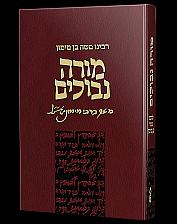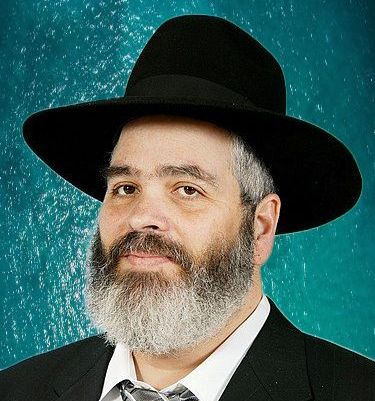  |
|
| |||||
The Moetzes Gedolei HaTorah of American has issued a Kol Korei about the WZO Elections
KOL KOREI REGARDING THE ELECTIONS FOR THE WZO
[Free Translation]
The Zionist Movement was founded 125 years ago with the purpose of
uprooting the foundations of Judaism and redefining the Jewish
people from "a kingdom of servants of Hashem and a holy people"
into a nation like all nations who are defined by a common
language, culture and land. Since, in the words of Rav Saadiah
Gaon, "our nation is a nation by virtue of its Torah," the gedolim
of that time did battle with this movement and ruled that anyone
who considers himself a Jew may not support it in any manner
whatsoever. It was for this reason that they founded Agudath
Israel to prevent those who keep Torah and mitzvos from joining
the Zionist Movement.
Accordingly, the geonim the Chofetz Chaim, the Gerrer Rebbe, Rav
Chaim of Brisk, the Chazon Ish, Rav Aharon Kotler, the Steipler,
Rav Elazar Menachem Man Shach, and Rav Yosef Shalom Eliashiv,
zichronam livracha, forbade joining the World Zionist Organization
(WZO). The Chofetz Chaim ruled that it is forbidden to join it
even if this means a third of the yeshivos will have to close.
Similarly, recently, a ruling forbidding this was issued by Maran
HaGaon Rav Dov Landau shlit"a.
Rabbonim and community heads in Iran were forced to participate in
mass demonstrations against Israel which took place on Friday in
the major cities throughout the country. The demonstrations marked
the El Kuds Day commemorated in several Moslem countries as a
protest calling for the liberty of Jerusalem from the hands of
Zionist capture.
Representatives of the Jewish community had to attend the
demonstrations in Teheran, the capital, as well as in Isfahan,
Shiraz, Bushhar and other cities. In Bushhar, Rav Ynnes Hamami
Lalhazar attended a rally of Moslem leaders which highlighted the
"continuing suppression of the Palestinians in Gaza and the
western border."
HaRav Eichenstein begins his talk:
They tell of HaRav Boruch Ber being ill during the period before
Yom Kippur. His doctors told him to take a blood test to see if he
would be allowed to fast. Rav Boruch Ber, who was living in
Kamenitz, would have to travel to Warsaw to make the test in a
laboratory and then wait for the results. He was invited to lodge
by a Chassidishe Rebbe.
He waited eagerly but there were no results yet. Time passed until
he realized that he would have to remain in Warsaw over Yom
Kippur.
It was getting let but there were still no results forthcoming and
Reb Boruch Ber was getting very edgy, not knowing what he should
do. His host turned to him in surprise, "Why are you so anxious?
Whatever the case, you will be doing the will of Hashem! If the
results show you can fast — all is fine and you can do what
the Torah requires. But even if you will not be allowed to fast,
you will still be keeping the mitzvah of the Torah of self-
preservation, which is also a mitzvoh of pikuach nefesh, which is
equally a commandment. Why, then, be so distraught?"
\
The surveys in the U.S. regarding the public backing of President
Trump indicate rising support. Americans, apparently, like a
strong figure who promises and keeps his word.
After so many years of Israel sitting on the defendant bench
against gangs of murderers who openly declare their intention to
destroy us, along comes the American president — and some
maintain that he has lost his sanity or that he has no bounds
— with an accepted axiom that the world is made up of the
good guys and the bad ones, the oppressors and the oppressed, the
murderers and their victims. In this story, the Palestinians are
the bad guys while the Jews are the good ones. They have a
legitimate right to their land while the Palestinians who
challenge this, should up and leave.
Iran is a dangerous country, a war-mongering one, and is
responsible for energizing all of its satellite agents in Gaza,
Lebanon and Yemen in this war, and it is necessary to stop it in
any form.
This essay was originally published in the print edition of
1996.
Part I
For Part II of this series click here.
One of the most outstanding phenomena of our generation has been
taking place behind the scenes and away from the limelight. It is
not a revolution of non-frum Jews but one that has taken place
within the frum community itself. It can be called the chizuk
bemitzvos revolution.
The posuk in Parshas Nitzovim (Devorim 30,1),
predicts: "When you have endured the brochos and
klolos then you will return... you will return to Hashem
and listen to his voice in a manner consistent with all which I
have commanded you."
The generation which preceded World War II, the churban of
European Jewry, witnessed a sharp decline in shemiras
hamitzvos both quantitatively as well as qualitatively. Thus
many people fell prey to the Reform, the Zionist, the Communist
movements, decreasing the number of Torah-true Jews.
At the same time very often even those who remained frum were not
immune to alien movements either. There was a decline in the level
of shemiras hamitzvos as well.
In recent years there has been a constant teshuvoh
movement. Thus many people who were raised in a non-frum
environment have returned to Hashem and his Torah. At the same
time the frum world has become more medakdeik in
mitzvos.
Examples of increased dikduk bemitzvos abound. We find
mitzvos such as loshon hora which were once almost unknown
that have become household words. Today many frum neighborhoods
have continuing activities such as shiurim in shemiras
haloshon, mishmeros of people who have accepted certain
hours to be extra scrupulous in avoiding loshon hora and/or
an annual loshon hora rally.
Once shatnez testing was unorganized, unreliable and
uncommon. Today, who would buy a garment without checking it first
with a shatnez laboratory? Boruch Hashem the list of
mitzvos is quite long and still growing.
One of the mitzvos whose observance is becoming ever more
widespread is chodosh — the prohibition against
eating grain from the new crop before the second day of Pesach.
This trend is worldwide, encompassing almost any land where frum
Jews reside.
We shall see that along with the increased popularity of this
mitzvah, chodosh observance has become considerably easier
as well. This is not unusual. It merely illustrates what Chazal
have taught us, (see Rashi to Shemos 19,5) kol hascholos
koshos. In our free market economies, the more people there
are doing any particular thing, the easier it gets as the market
"directs" resources toward meeting the growing demand.
In this essay, we will explain the background of the prohibition
against eating chodosh, as well as the halachic basis used
to justify eating products that were known or suspected of being
chodosh.
Rain and Kinneret Watch by Dei'ah
Vedibur Staff
Our weekly report of the rain and the level of the Kineret
- Winter, 5785.
This Google Custom Search looks only in this website.
Outstanding Articles From Our Archives
Opinion & Comment
Part I
If anyone ever tells you "evolution," just say "sylvia curruca." That should put an end to the conversation rather quickly, unless of course you're the one who wants to do the convincing.
"Who's sylvia curruca?" you ask.
It's not who; it's what. Sylvia curruca is the scientific name for a little bird whose common name is the lesser whitethroat, a warbler (a type of songbird) that spends its summers in northern Europe and winters in sub-Saharan Africa. The point is that this bird can do some truly astonishing feats of navigation which make the proposition of evolution by chance virtually impossible to entertain.
Essentially, this little bird has a map of the night sky embedded in its genes. To suppose that this map got there by chance requires an incredible, and totally unwarranted, amount of faith in what chance can and cannot do. So if you ever find that you need to argue against evolution, it's a handy little bird to remember.
But let's not start with sylvia curruca. Its feats of navigation may represent an extreme capability that is not found in most other migratory animals. Rather let's begin by looking at a few slightly less astounding facts regarding animal migration and navigation. Even these simpler facts are amazing and worth knowing about.
A good place to begin is with the Arctic tern. It currently holds the world record for distance of migratory travel. During summer in the northern hemisphere, it nests in the Arctic. Come autumn, it heads south to enjoy summer again in the Antarctic. The total distance it travels round trip on its migratory journeys is close to 25,000 miles.
There is as yet no direct evidence that the tern's tendency to fly from north to south and back again is an inherited trait. Terns travel in flocks and the young fly with the adults. So the urge to fly, and the usefulness of flying, from one end of the globe to the other may be something that is learned by these birds and not purely an instinct.
But even if so, one must still wonder how the whole thing got started. What ever prompted any bird to fly about 12,000 miles in search of food or a more favorable climate? How did it know that it would be rewarded at trip's end?
Moreover, if other migratory animals are a guide, there is good reason to suppose that the tern is compelled by its genetic makeup to fly where it does and that its behavior is instinctive, not knowledge learned from others. If so, the question of why and how it does it, is all the more compelling.
Opinion & Comment
Once again we prepare for Pesach. Do we think there is no point to read the Haggadah again and again? Do we yawn at the thought of discussing Pesach, matzo and morror for the tenth or the thirtieth or the fiftieth time?
Are we bored with the budding bushes? Are we tired of the spring flowers? Have we seen enough blossoming trees, heard enough of the songs of the birds, to last us a lifetime?
The works of G-d are endlessly fascinating, and are a renewable resource that never fail to inspire and exhilarate. This applies to the vegetable and animal creations and all the more so to the Torah and mitzvos which we have been given by the Creator of the Universe -- in part for those purposes.
Just to repeat the Haggadah with its resonance of thousands of years of Jewish history all focused on this one night, to feel that we say the same words, written by some of the finest and greatest people to walk this earth, gathered around our tables with family, friends and guests -- is this not something to look forward to with the eager anticipation?
And there is always new insight, new guidance and new wisdom for us. It is truly the wise, the understanding, the ones who know Torah well, who have the easiest and best time fulfilling the commandment to tell as much as they can fit in about the exodus from Egypt that took place so long ago but still liberates each and every one of us today and every day.
|
|||||




.jpg)



